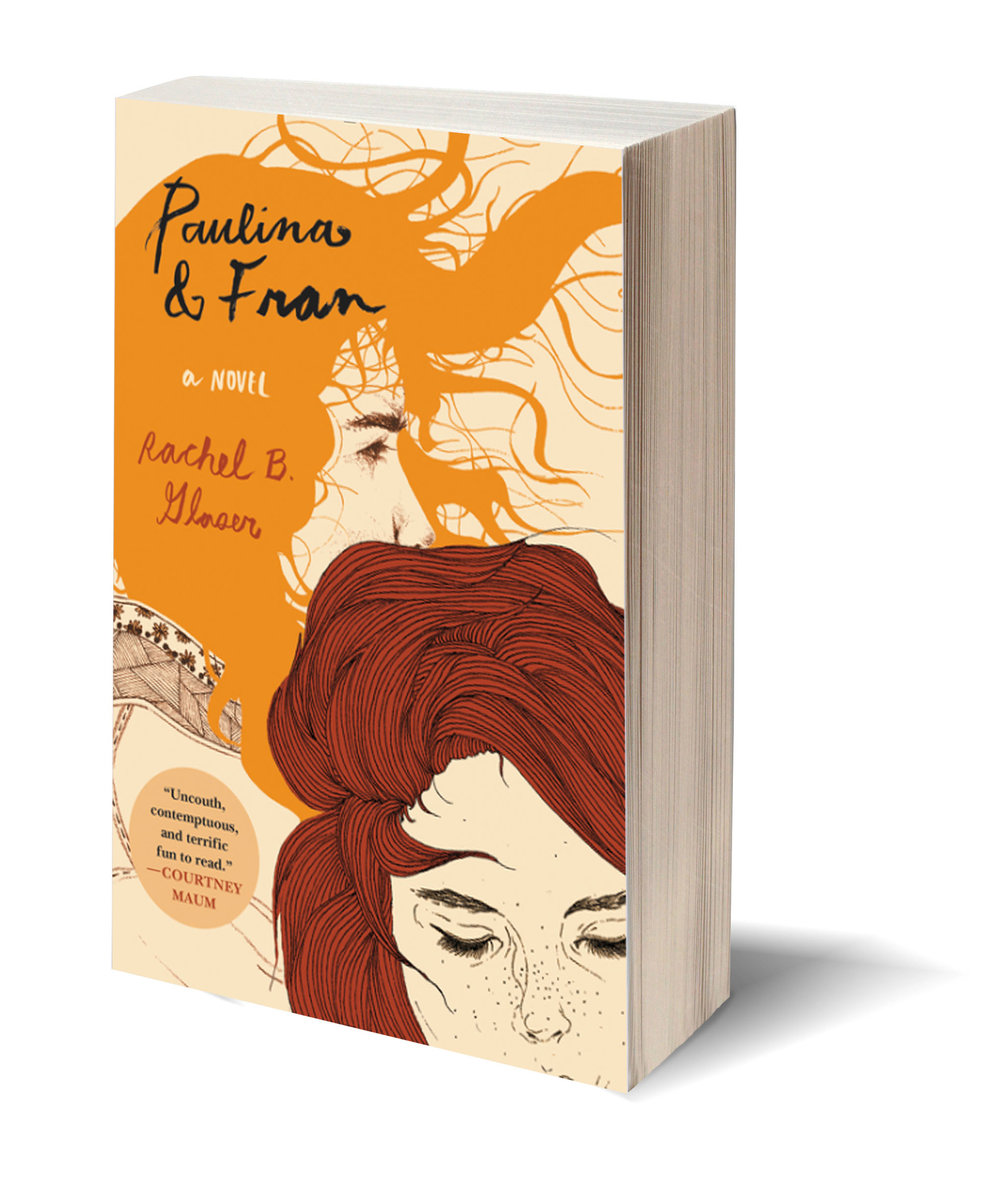Paulina & Fran
By Rachel B. Glaser
Harper Perennial |
 |
|---|
Reviewed by Angela Woodward
Rachel B. Glaser's antic first novel centers on two students at an elite visual arts college. Though Paulina's major is allegedly art history, her art is the creation of herself. She ceaselessly curates her coolness, her clothes, her friends, her cruel and clever remarks, and her voracious and very public sexual appetite. She has "the hair of creative geniuses," meaning, wild curly locks. Fran is a painter, but that seems to matter less at the art school than her off, but effective, fashion choices, her complex face, and that she too has curly hair. The more audacious Paulina craves, loves, and despises the milder, but still witty, Fran. The two sidle close, repel each other, come together, and part, sketching between them a brilliant, wasted youth.
The world of the art school contains no parents, no siblings, no children, and no jobs— only art students doing their best imitations of art students. Sometimes graduates of the school come visit and give vicious critiques. A few professors dot the art school like poorly placed cocktail tables, but the faculty matter little in the grander pattern of thrift store clothes, parties, and sex. The novel moves at Paulina's restless pace, grabbing only the good parts and skipping over anything dull or sentimental. In our first glimpse of Paulina, she dons a flowing dress from SUPERTHRIFT, inspects herself, cuts the dress to show her thighs, and flings the scraps of satin in the trash. The reckless narration breezes between points of view and skips troughs of time, but conveys in each paragraph a crystalline, condensed story. These little wonders flow easily one to the next, and the reader can hardly linger. Yet in prose infinitely light and hilarious, Glaser packs a novel's worth of events. In a description of a pair of red leather boots, she writes, "Years ago, Paulina had stolen them off a scarecrow, but had sacrificed them to Sadie in exchange for completing her design homework freshman year. The boots pinched the feet of whoever wore them, but gave the wearer power. For the hundredth time, Paulina regretted the trade." Whatever rural escapade got Paulina into contact with a scarecrow billows ominously as back-story, while the mercenary nature of her relationship with Sadie expands out from this vignette. With this extreme compression, past and future trail like debris around the explosions of the present moment.
Glaser is a master of witticisms, with brief descriptions and flickers of thought that are finely honed and deeply comic. Fran, in a post-college slump, decides that she's too bored to masturbate. Immediately she "imagined this written on a T-shirt: TOO BORED TO MASTURBATE. Or maybe: 2 BORED 2 MASTURBATE." She moves in an instant from self-reflection to public promulgation, to refinement of the logo. In a throwaway scene-setting description, Paulina, on a street in New York, catches a whiff of a passing friend's perfume: "The smell recalled the old, easy life of frolicking and looking at amateur drawings." Whole months can be described in the same style, a few caught thoughts standing in for a developing and then devolving relationship. After Fran moves away to take a job, she is at first charmed by her landlady:
Fran saw herself spiritually reviving the old woman, perhaps somehow encouraging a love affair between Ruthie and an old (but handsome) mailman or neighbor, and this successful union would be so emotionally satisfying that Fran wouldn't mind being single herself, having done this good deed. These fantasies vanished once Fran moved in. It seemed Ruthie had saved all her energy and good spirits for that first meeting and now she returned to her normal state of reading the newspaper and forgetting she had water boiling.
These caustic miniatures rush by at breakneck speed, and the few repeated scenes and motifs –the red boots, a trip to Norway, an anthem of the Color Club boys—gather a peculiar power for being the only shards not immediately discarded. The nature of the relationship between Paulina and Fran is hard to pin down, and Fran's charm is always alluded to as something not quite expressible. The fact is that this relationship, veering between friendship, love, sexual awakening, hatred, and longing, is an anchor for both women amidst a swirl of seemingly useless waste. Their art school has taught them nothing, and once they've graduated, they can't return to a world that satisfying and complete. They have only the personas they've crafted, and these only really work within the confines of their undergraduate careers. The ecstasy of "youth loving youth" is gone almost as soon as it appears. Paulina and Fran are not much older at the end of the novel, and certainly no wiser, but they've gained a worldly sadness.
Too few novels take on women's friendships. We're used to reading marriage plots, about husbands and wives, or buddy stories, or maybe about mothers and daughters, but a fully focused reflection on the vicissitudes of women's relationships seems unexplored territory. There are plenty of men in Paulina & Fran, but they serve as props or backdrops for the two women. In fact they use their shared boyfriend Julian as a message board, Paulina leaving a note to Fran inked on his backside. One of the glories of the book is how fully imagined the women seem, even as much of the action is slapstick and a bit too intense to be meant as realistic. The connection between the two of them tugs even when they can't stand each other, and their need to be seen in the other's eyes is the strongest factor in their bereft lives. For such an easily pleasing page-turner, Paulina & Fran holds a dense core. Glaser's fine eye shreds and corrodes, yet the pulse of love is untouched by sarcasm, and beats on at the novel's heart.
